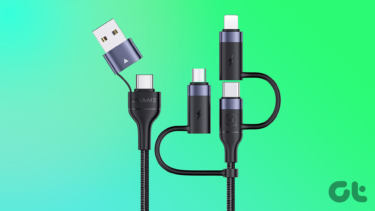Charging devices is also pretty much synonymous with cables. These can honestly get in the way sometimes. Remembering to actually charge devices can also be a hassle. I’m sure you have experienced wanting to use a particular device before only to realize it isn’t charged. Well, one alternative is wireless charging. I mean we have all seen various versions of a wireless charging brick/mat right? They do work well and eliminate you having to connect your device to charge without a cable in the way. However, this type of charging station requires you to basically place your electronic device right on top of it . Also, while there are powermats available which can charge multiple devices at once, they are still somewhat limited. Bearing these limitations in mind, what would you say if I told you that the technology exists to allow you to charge multiple devices at a distance, right at home in your living room? Believe it or not, this is possible. The concept has recently been demonstrated through calculations by a team from Duke University, the University of Washington and Intellectual Ventures’ Invention Science Fund(ISF). It’s also backed up by previous experimental evidence.
Power Transfer Over Larger Distances
The team’s proposed solution works by focusing microwave energy onto a receiver which converts this form of electromagnetic energy into electricity. If the receiver is too far away however, then the power captured will be too low. If placed close enough in a region referred to as the Fresnel zone then the received power is high enough to be useful. For this system to work, the energy from the microwaves must be focused onto a receiver. To do this the team proposed metamaterials to do the job. Metamaterials are tiny electrical cells which can be used to manipulate electromagnetic waves. They calculated that a flat metamaterials device about the size of a flat-screen TV, could be used to focus the microwaves. They also calculated that the wave could be focused onto a spot the size of a cell phone. This could be achieved up to 10 meters away and the proposed system is capable of powering more than one device at a time. There are other methods of focusing the waves using complex antenna systems. However, they would be quite expensive to implement, hence the proposed metamaterials. The plausibility of using metamaterials to focus microwaves is further reinforced by a previous demonstration of microwave manipulation. A few years ago, David Smith of the Duke University team and his lab created a cloaking device which bent microwaves around an object. This device relied on metamaterials to bend the microwaves.
Advantages and Challenges
With this system, several devices in a single room such as cell phones, computer peripherals, gaming controllers, cordless telephones and other electronics can be charged at the same time without the use of cables. If such a system were implemented, a safety mechanism would have to be put in place to interrupt transmission when something gets in the way of the microwave signal. Due to the high transmission power of the microwave radiation, people and pets should be protected from being exposed. For this protection system to work, each device would need to broadcast its location ensuring charging in the first place. The lens focusing system has to know where to focus the microwave energy after all. Devices would also need to indicate when they are receiving power. If power is being received but then an interruption is detected, this would mean that something is blocking the transmission. Power should then be shut off. In addition, the software and controls for the necessary metamaterial based lens would need to be crafted in such a way as to focus the beams as efficiently as possible. A low cost microwave microwave energy source needs to be developed as well for this application. This is necessary, as existing solutions which could work for such an application are cost prohibitive.
Hopes For The Future
Although there are challenges with actually implementing such a charging system, the technology to make such a system already exists. The simulations carried out by the team have shown that it is plausible. The technology simply needs to be tweaked so that this system, if implemented, would be able to function as efficiently as possible. It would be awesome to see this tech in action. It would mean worrying less about keeping devices charged as long as they are in range of this system. The above article may contain affiliate links which help support Guiding Tech. However, it does not affect our editorial integrity. The content remains unbiased and authentic.












